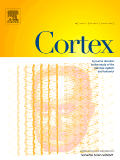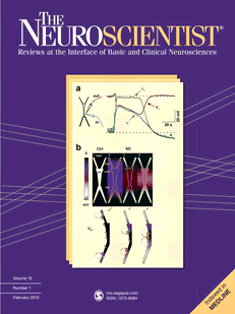
NEUROSCIENCE LETTERS
Scope & Guideline
Advancing Insights into Nervous System Complexities.
Introduction
Aims and Scopes
- Neurobiology and Neurochemistry:
The journal covers research on the biological and chemical processes underlying nervous system function, including studies on neurotransmitters, neurotrophic factors, and their roles in health and disease. - Neurodevelopment and Neuroplasticity:
Research exploring how the nervous system develops and adapts over time, including studies on neuronal differentiation, synaptic plasticity, and the effects of various interventions on brain structure and function. - Behavioral Neuroscience:
Investigations into the relationship between brain function and behavior, including studies on cognition, emotion, and the impact of drugs and environmental factors on behavior. - Pathophysiology of Neurological Disorders:
The journal publishes research aimed at understanding the mechanisms underlying neurological diseases such as Alzheimer's, Parkinson's, and multiple sclerosis, with a focus on identifying potential therapeutic targets. - Neuroimaging and Electrophysiology:
Studies utilizing advanced imaging techniques and electrophysiological methods to explore brain activity and connectivity, providing insights into both normal function and neuropathology. - Therapeutic Interventions:
Research on novel therapeutic approaches for neurological conditions, including pharmacological treatments, neurostimulation, and rehabilitation strategies.
Trending and Emerging
- Neuroinflammation and Immune Response:
Research exploring the role of neuroinflammation in various neurological disorders is on the rise, reflecting a growing recognition of the immune system's impact on brain health. - Neurotechnology and Neuromodulation:
Innovative techniques such as transcranial magnetic stimulation (TMS) and deep brain stimulation (DBS) are increasingly being studied for their therapeutic potential, indicating a shift towards non-invasive and targeted interventions. - Gut-Brain Axis Research:
Investigations into the relationship between gut health and brain function are emerging as a significant theme, with studies linking microbiota composition to neurological outcomes. - Personalized Medicine Approaches:
There is an increasing focus on tailoring interventions based on individual genetic, environmental, and lifestyle factors, which aligns with broader trends in healthcare towards personalized treatments. - Neurotechnology in Rehabilitation:
Research focusing on the application of neurotechnology in rehabilitation settings, particularly for motor and cognitive impairments, is gaining traction as the field seeks to enhance recovery strategies. - Longitudinal and Developmental Studies:
There is a growing emphasis on longitudinal studies that track neurological and cognitive changes over time, providing insights into developmental trajectories and the impact of early interventions.
Declining or Waning
- Traditional Pharmacology:
Research focused solely on pharmacological interventions without integrating novel therapeutic approaches or exploring mechanisms of action has become less prevalent, as the field shifts towards more holistic and integrative strategies. - Basic Mechanistic Studies:
There has been a noticeable decrease in the publication of purely mechanistic studies that do not translate into clinical implications or therapeutic applications, as the emphasis has moved towards translational research. - Animal Models with Limited Relevance to Human Conditions:
Research relying on outdated or less relevant animal models is declining, with a growing preference for studies that better mimic human neurological conditions or incorporate human-derived cells. - Neuroanatomy without Functional Correlation:
Studies focused solely on neuroanatomical findings without linking them to functional outcomes or behavioral changes are losing traction, as the field increasingly values functional relevance.
Similar Journals

CORTEX
Unveiling Insights into Cognitive ProcessesCORTEX is a premier international journal published by Elsevier Masson, focusing on the cutting-edge areas of cognitive neuroscience, psychology, and neurology. With an impressive impact factor that places it in Q1 quartiles across multiple categories such as Cognitive Neuroscience and Neuropsychology, this journal serves as a vital resource for researchers, clinicians, and students alike. Established in 1964, CORTEX has continued to excel in disseminating high-quality scholarly work, offering insights that significantly enhance our understanding of the brain's functioning and behavior. Although not an open-access publication, it provides various access options to ensure the dissemination of knowledge is as wide-reaching as possible. As the field of cognitive psychology evolves, CORTEX remains at the forefront, fostering an environment for interdisciplinary collaboration and innovation. Researchers seeking to stay engaged with the latest advancements will find CORTEX an indispensable tool for their professional development.

NEUROSCIENCE RESEARCH
Championing High-Quality Neuroscience ResearchNEUROSCIENCE RESEARCH, published by Elsevier Ireland Ltd, is a leading journal in the field of neuroscience, with a notable reputation for disseminating high-quality research that spans a variety of topics within the discipline. With an ISSN of 0168-0102 and an E-ISSN of 1872-8111, this journal serves as a vital platform for both established researchers and emerging voices in the field. Ranking in the Q2 quartile in both Medicine and Neuroscience categories, it has been recognized as a reliable source of innovative findings since its inception in 1984, with continuous publication through 2024. Although it does not currently offer Open Access options, the journal is indexed in Scopus, holding a significant position at Rank #48/113 in General Neuroscience, reflecting its contribution to advancing the understanding of neural mechanisms across various contexts. With its address anchored in Ireland, NEUROSCIENCE RESEARCH plays an essential role in bridging scientific inquiry and practical applications, making it an indispensable resource for researchers, professionals, and students dedicated to the burgeoning field of neuroscience.

NEUROSCIENCE
Connecting scholars through groundbreaking neuroscience.NEUROSCIENCE, published by PERGAMON-ELSEVIER SCIENCE LTD, has established itself as a reputable journal in the field of neuroscience since its inception in 1976, continuing its contributions through 2024. With a Category Quartile ranking of Q2 in Neuroscience (miscellaneous) and a Scopus Rank of #41 out of 113, this journal represents a critical platform for the dissemination of innovative research and insights. Although it currently does not offer open access options, NEUROSCIENCE aims to advance our understanding of the nervous system by publishing high-quality original research, reviews, and methodological articles, thereby engaging a comprehensive audience of researchers, professionals, and students alike. With an impact factor that reflects its significance in the scientific community, this journal remains a go-to source for cutting-edge discoveries and scholarly discussions in the dynamic field of neuroscience.

Behavioral and Brain Functions
Exploring the Intricacies of NeuroscienceBehavioral and Brain Functions is a leading Open Access journal published by BMC, dedicated to advancing the field of behavioral neuroscience, cognitive neuroscience, and biological psychiatry since its inception in 2005. This esteemed journal, based in the United Kingdom, has established itself as a vital resource for researchers and professionals, boasting a remarkable influence demonstrated by its Q1 and Q2 rankings across multiple relevant categories. With its commitment to providing unrestricted access to high-quality research, the journal facilitates the dissemination of significant findings in understanding the complex interactions between behavior and brain function. The journal ranks impressively within the Scopus database, positioning itself among the top-tier publications in its categories, making it an essential platform for academic discourse and innovation. As it converges through 2024, Behavioral and Brain Functions continues to play a crucial role in shaping the forefront of neuroscientific inquiry, inviting contributions that challenge our understanding and promote further exploration in these dynamic fields.

NEUROSCIENTIST
Pioneering Insights into the Human BrainNEUROSCIENTIST is a leading journal in the field of clinical neurology and neuroscience, published by SAGE Publications Inc. With an impressive impact factor reflected in its Q1 quartile ranking in both clinical neurology and miscellaneous neuroscience as of 2023, this journal positions itself as a crucial platform for the latest research and advancements in the neural sciences. Spanning from 1995 to 2024, NEUROSCIENTIST features a range of high-quality, peer-reviewed articles that cater to researchers, practitioners, and students alike. Although it does not offer Open Access options, the journal remains a vital resource owing to its Scopus rankings, situating it within the top percentile of its categories: ranked #28 out of 400 in clinical neurology and #15 out of 113 in general neuroscience. The journal's commitment to disseminating significant findings underlines its importance in fostering advancements in neurological understanding and treatment.

BRAIN RESEARCH BULLETIN
Driving innovation in brain research and understanding.BRAIN RESEARCH BULLETIN is a leading academic journal published by PERGAMON-ELSEVIER SCIENCE LTD, dedicated to the dissemination of high-quality research in the interdisciplinary field of neuroscience. Since its inception in 1976, this journal has served as a vital platform for researchers, professionals, and students interested in a broad spectrum of topics within neuroscience, making significant contributions to the understanding of brain function and its associated disorders. With a commendable impact factor and a current Scopus rank of #35 out of 113 in general neuroscience, the journal holds a Q2 quartile ranking, underscoring its relevance and influence in the academic community. BRAIN RESEARCH BULLETIN invites submissions of original articles, reviews, and brief communications, enhancing scholarly communication within this dynamic field. Although the journal is not open access, it ensures widespread reach and impact through various subscription models, allowing access to pivotal findings that pave the way for future research advancements. For researchers aiming to share impactful discoveries and insights within the neuroscience community, BRAIN RESEARCH BULLETIN remains an essential outlet.

RESTORATIVE NEUROLOGY AND NEUROSCIENCE
Transforming Lives: Cutting-edge Research in Restorative NeurologyRESTORATIVE NEUROLOGY AND NEUROSCIENCE, published by IOS PRESS, is a premier journal dedicated to advancing the fields of neurology and neuroscience. Since its inception in 1989, this journal has played a crucial role in disseminating cutting-edge research findings and innovative therapeutic approaches that aim to restore neurological function and improve patient outcomes. With a focus on developmental neuroscience and clinical neurology, the journal holds a 2023 Scopus ranking of #129 out of 400 in clinical neurology, and #15 out of 37 in developmental neuroscience, reflecting its significant influence in these domains. Although it operates on a non-open access model, RESTORATIVE NEUROLOGY AND NEUROSCIENCE offers valuable insights for researchers, healthcare professionals, and students seeking to deepen their understanding of neural restoration mechanisms and therapeutic strategies. Located in Amsterdam, Netherlands, the journal continues to foster scholarly dialogue and innovation, contributing to the global advancement of neuroscience and neurology.

Frontiers in Neuroscience
Advancing the frontiers of neural understanding.Frontiers in Neuroscience, published by FRONTIERS MEDIA SA, is a premier open-access journal dedicated to advancing our understanding of the nervous system through innovative and rigorous research. Since its inception in 2007, this journal has become an influential platform for researchers, featuring a diverse range of topics across various subfields of neuroscience. With its current ranking in the second quartile (Q2) of the category "Neuroscience (miscellaneous)" and a commendable position of #40 out of 113 in general neuroscience according to Scopus, Frontiers in Neuroscience is recognized for its high-impact contributions. The journal promotes free access to scholarly work, ensuring that cutting-edge neuroscience studies reach a global audience and foster collaboration across disciplines. By bridging gaps in knowledge and facilitating the exchange of ideas, Frontiers in Neuroscience plays a pivotal role in addressing the complexities of the nervous system and its effects on behavior, cognition, and health.

Neurology International
Pioneering Insights in Clinical NeurologyNeurology International is a prestigious open-access journal published by MDPI that has been making significant contributions to the field of neurology since its establishment in 2009. With its ISSN 2035-8377, this journal is committed to disseminating high-quality, peer-reviewed research that addresses a wide range of clinical topics in neurology. Operating out of Basel, Switzerland, the journal holds a respectable Q2 ranking in the clinical neurology category as of 2023, indicating its influence and dedication to advancing scientific knowledge. Researchers and practitioners alike will find value in its comprehensive articles, which are readily accessible to a global audience, facilitating the sharing of innovative findings and clinical practices. As it converges towards 2024, Neurology International continues to provide a vital platform for scholarly discourse, aiming to improve patient outcomes and enhance our understanding of neurological disorders.

CEREBRAL CORTEX
Exploring the intricacies of the brain.CEREBRAL CORTEX, published by Oxford University Press Inc, is a premier journal dedicated to advancing the field of neuroscience, specifically focusing on the cellular, molecular, and cognitive aspects of cortical structure and function. With an impressive impact factor that situates it in the top quartile (Q1) of its categories for 2023, this journal holds significant relevance for researchers and professionals interested in the latest discoveries and methodologies in both Cognitive Neuroscience (ranked #31 out of 115) and Cellular and Molecular Neuroscience (ranked #48 out of 97). Operating without an open access model, it ensures rigorous peer review and dissemination of high-quality research from across the globe. Since its inception in 1991, CEREBRAL CORTEX has established itself as a critical platform for educators and inventors, pushing the boundaries of knowledge in understanding brain function and its implications for behavior. Researchers and students alike will find this journal an invaluable resource for both foundational and cutting-edge studies in neuroscience.